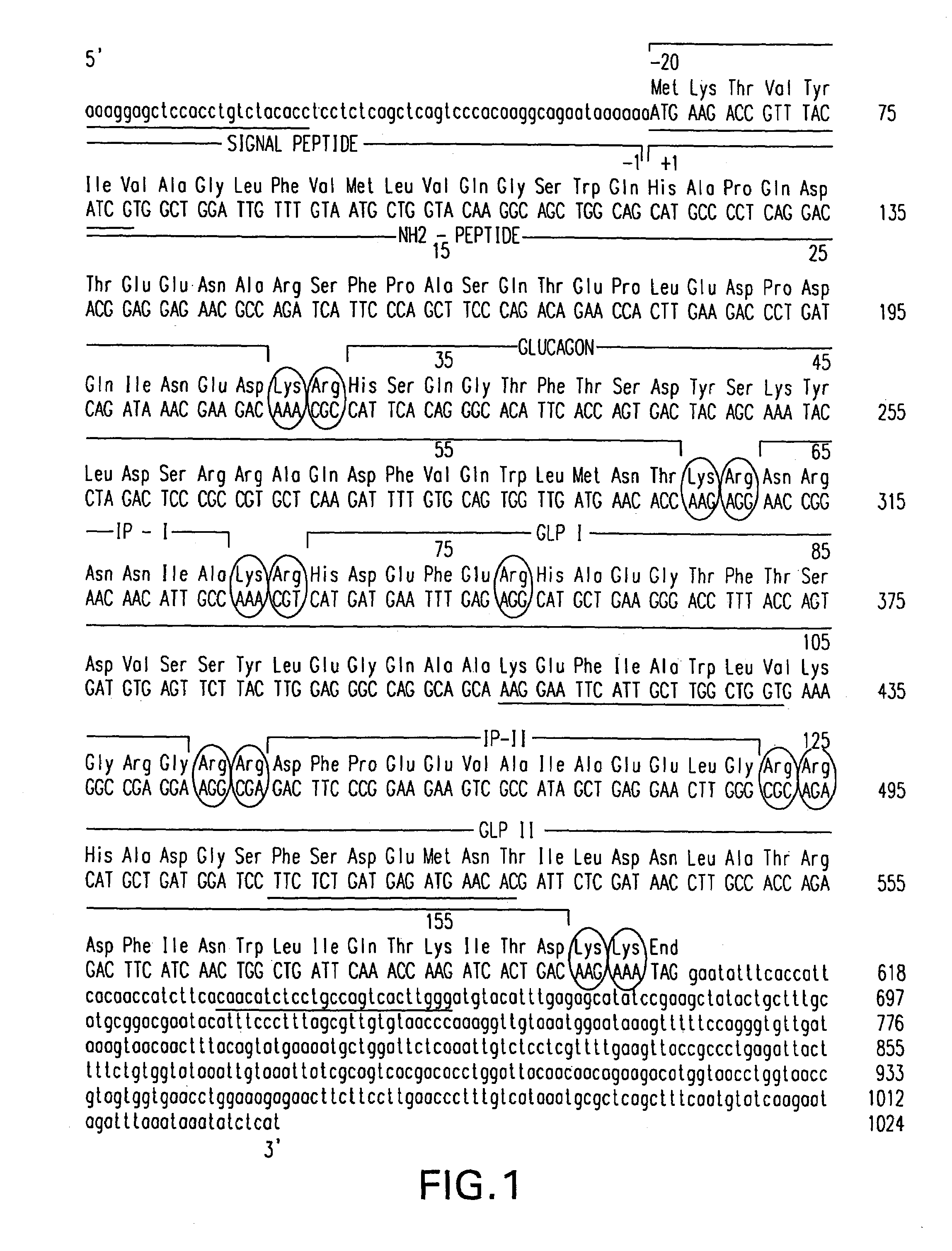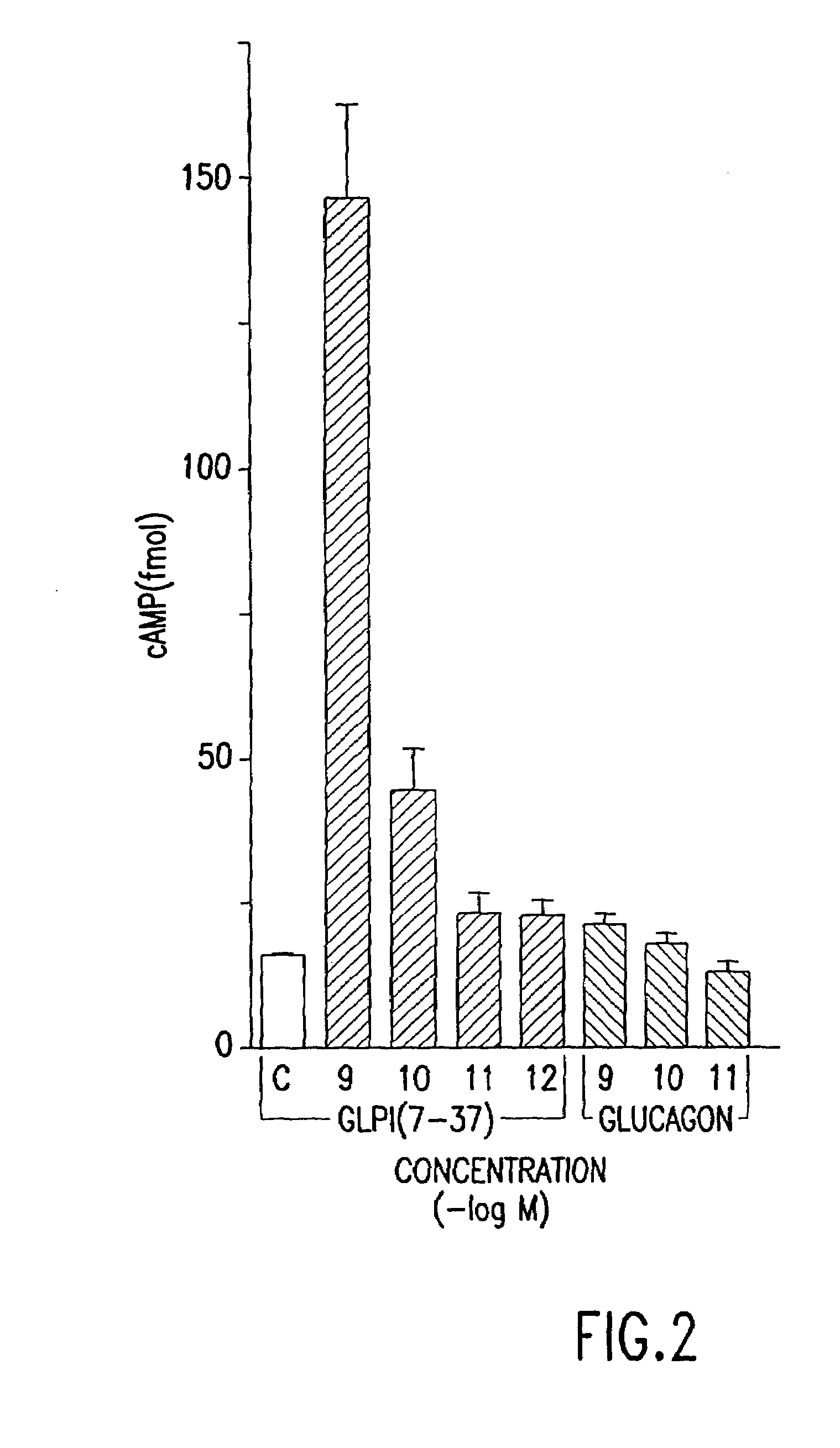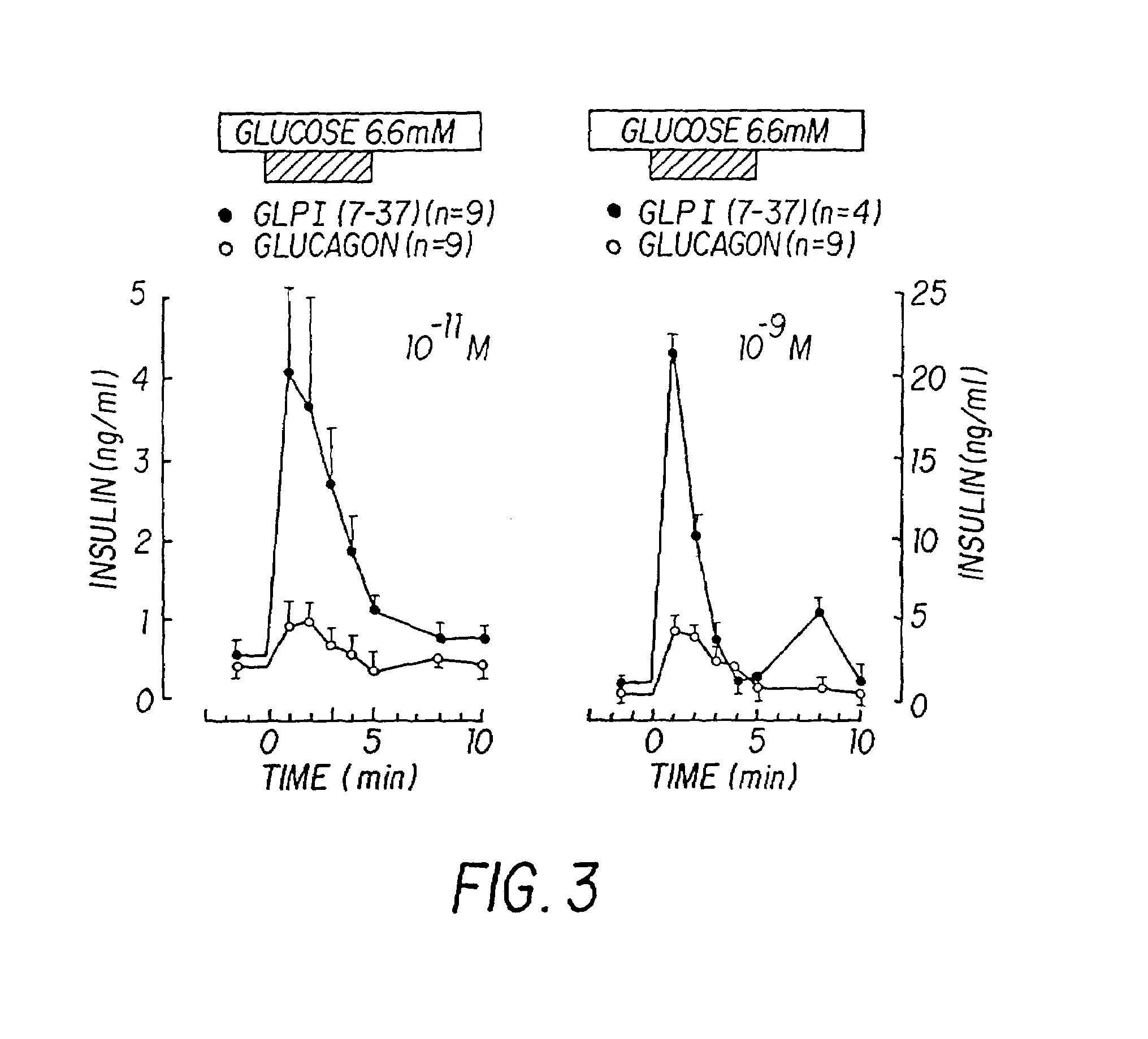Insulinotropic hormone derivatives and uses thereof
a technology of insulinotropic hormone and derivatives, which is applied in the field of insulinotropic hormone derivatives, can solve the problems of blood sugar level rise, extensive investigations designed to elucidate the biological effects of these molecules had been unsuccessful, and the effect of increasing blood sugar
- Summary
- Abstract
- Description
- Claims
- Application Information
AI Technical Summary
Benefits of technology
Problems solved by technology
Method used
Image
Examples
specific examples
Example 1
Specificity of GLP-1 Peptides
[0078]In order to demonstrate that the effects of GLP-1(1-37), GLP-1(1-36) and GLP-1(7-37) were specific for insulin, and were not capable of inducing or provoking non-specific gene expression, the effect of these peptides on the levels of insulin, actin and angiotensinogen mRNAs in rat insulinoma cells were conducted.
[0079]Rat insulinoma cells of cell line RIN-38 were derived from a continuous islet cell line, RIN-r, which was established from a transplantable rat islet cell tumor (Gazdar, A. F., et al., Proc. Natl. Acad. Sci., USA 77:3519–3523 (1980)). The cells were maintained in DMEM (Gibco) at a glucose concentration of 4,500 mg / L and supplemented with 10% heat-inactivated fetal bovine serum (Gibco), 100 U / ml of penicillin and 100 μg / ml of streptomycin. Incubations were carried out at 37° C. in 95% air:5% CO2. Cells grown in the above manner were washed and resuspended in DMEM (Gibco) containing 0.1% bovine serum albumin and 25 mM glucose. ...
example 2
The Effect of GLP-1(7-37) on the Transcription of the Insulin and other Genes
[0084]The effect of GLP-1(7-37) on the transcription of the insulin and actin genes in RIN-38 insulinoma cells was investigated. Gene transcription rates were determined by quantification of nascent insulin and beta-actin RNA transcripts in nuclei from control and GLP(7-37) treated cells. The GLP-1(7-37) concentration was 10−7M. Incubation was for 4 hours. Nuclear RNA was hybridized to an excess of cloned specific DNA bound to nitrocellulose and the filters were washed as described by McKnight, G. S., et al., (J. Biol. Chem. 254:9050–9058 (1979)). Rat insulin (Ulrich, A., et al., Science 196:113–119 (1977)) and, for control, chicken beta-actin cDNAs, provided by Dr. D. Cleveland, the Johns Hopkins University School of Medicine, Baltimore, Md., were used. Hybridization efficiency was controlled through the addition of the hybridization solution of [3H] UTP insulin cRNA. Experiments were done in duplicate and...
example 3
Effect of GLP-1 Derivatives on Cellular cAMP Levels
[0085]In order to determine whether glucagon-like proteins were capable of affecting cellular cAMP levels, the effects of GLP-1(7-37) and GLP-1(1-37) on cAMP levels in RINS-38 insulinoma cells (Expt. I and Expt. II in Table 2, respectively) was determined.
[0086]Cells were grown as described in Example 1, in 26 well culture dishes. Varying amounts of glucagon-like peptides were added to culture wells in triplicate. After permitting incubation for 10 minutes, the total cell media was examined for cAMP, and the concentration of cAMP was determined. The results of this experiment are shown in Table 2. Twenty microliters from each culture well was assayed.
[0087]
TABLE 2PeptideConcentration (M)Expt. IExpt II 01409110−640017010−737012010−849416010−951510010−102539010−1153390
[0088]This experiment reveals that GLP-1(7-37) was capable of stimulating cAMP levels even when present at a concentration of 10−11 M. The increase in cAMP levels is an ...
PUM
| Property | Measurement | Unit |
|---|---|---|
| pH | aaaaa | aaaaa |
| total volume | aaaaa | aaaaa |
| total volume | aaaaa | aaaaa |
Abstract
Description
Claims
Application Information
 Login to View More
Login to View More - R&D
- Intellectual Property
- Life Sciences
- Materials
- Tech Scout
- Unparalleled Data Quality
- Higher Quality Content
- 60% Fewer Hallucinations
Browse by: Latest US Patents, China's latest patents, Technical Efficacy Thesaurus, Application Domain, Technology Topic, Popular Technical Reports.
© 2025 PatSnap. All rights reserved.Legal|Privacy policy|Modern Slavery Act Transparency Statement|Sitemap|About US| Contact US: help@patsnap.com



